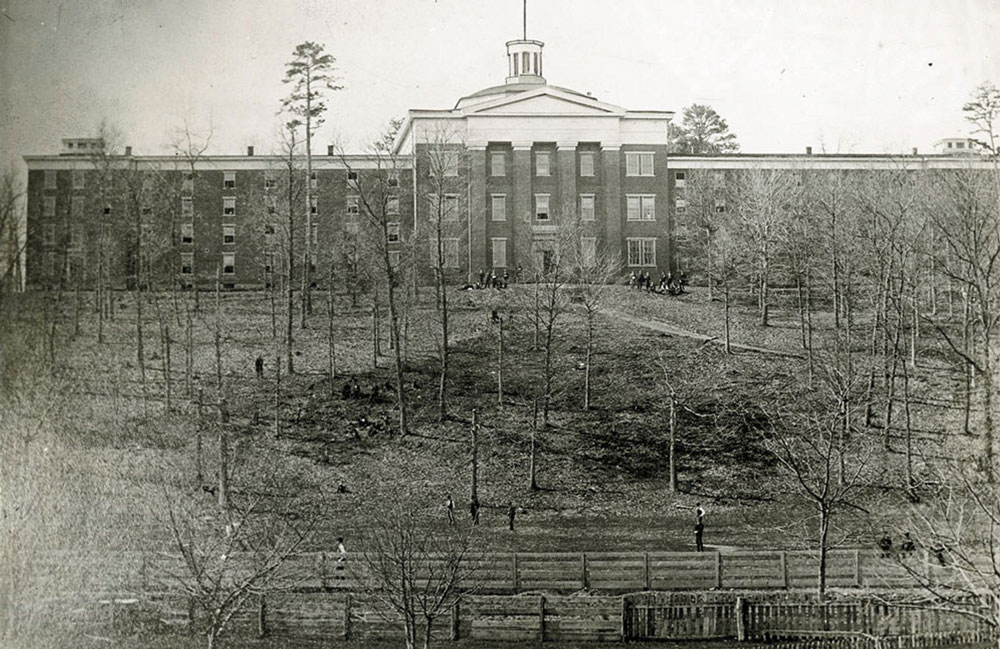

The charter, written by Stephen W. Taylor, described a primary school, academy and college called the University at Lewisburg. On Valentine’s Day 1846, news of the future school appeared in the Lewisburg Chronicle, and the Board of Trustees met for the first time.
Taylor, a former professor at Madison University (now Colgate in New York), was the mastermind behind the University, planning and setting up the school and recommending that a $100,000 endowment — a massive sum in those days — be raised to start the University. He established a precursor several months after the charter became official — teaching, alongside his son Alfred, at a new preparatory school in the basement of the First Baptist Church.
Within three years, the sum was raised, the 73-acre former Brown farm was purchased, the first structure — the Academy Building, now called Stephen W. Taylor Hall — was constructed for $8,000 atop the hill, and plans for the west wing of the Main Building progressed. The prep school moved out of the church basement and up the hill and was renamed the Academical and Primary Department of the University at Lewisburg.
After Madison University beckoned Taylor to return as its president, Howard Malcolm became the University at Lewisburg’s first president, in 1851. Thirty-five years later, the University was renamed in honor of trustee William Bucknell, whose largesse prevented closure during a dire financial crisis. And the rest, as they say, is history.
Bucknell’s 175-year anniversary will be observed throughout 2021. Fittingly, exhibits in Bertrand Library will span the years, according to Isabella O’Neill, head of Special Collections and University archivist.
Says O’Neill, “By seeing and studying historical evidence in the form of photographs, documents and artifacts, Bucknellians can better understand how the founding of Bucknell University 175 years ago established the foundation needed to overcome obstacles to its growth as an institution and ensure its future.”